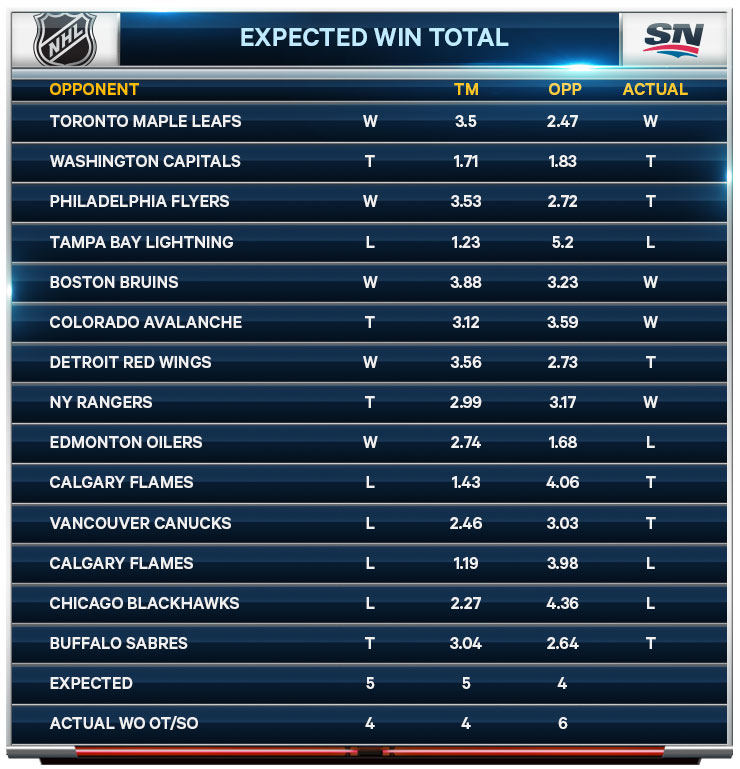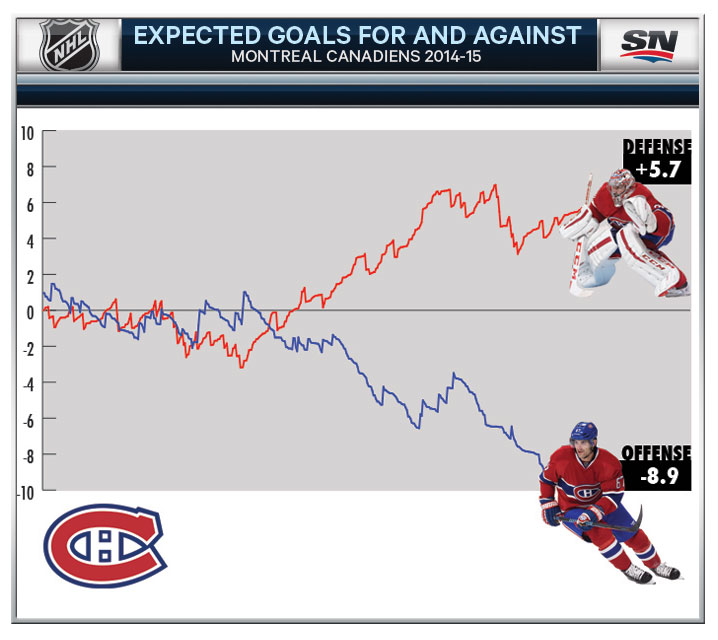In an atmosphere of instant opinion, perspective often gets buried by hot takes, Twitter outrage and surface-level analysis. Nothing highlights this better than the 2014-15 Montreal Canadiens, because while the roller coaster climbs and drops, nothing has really changed outside of perception and expectations.
The Habs’ hot start coupled with a young core of stars in their prime have take expectations to an absurd level. Everywhere you turn you are being told the Habs are experiencing a historic start. Yahoo has them as 14/1 favourites to win the Cup.
(2)
STANLEY CUP ODDS
Habs 14/1
Rangers 20/1
Wings 25/1
Canucks 25/1
Stars 33/1
Preds 33/1
Isles 33/1
Leafs 33/1
Avs 40/1
Devils 40/1
— Yahoo Sports NHL (@YahooSportsNHL) November 4, 2014
This season’s team has even been compared to the 1962 Canadiens because their win totals are the same. Obviously, connecting this edition of the Habs to the dynastic teams of the past is meant simply to ratchet up the hyperbole machine. The problem is this start isn’t their best in 52 years, it isn’t even their best start in 12 months if you care to use perspective and context.
The NHL recently adopted ROW (regulation plus overtime wins) as a tiebreaker to slightly penalize teams with a lot of shootout victories. Victories that didn’t exist before 2006. When you take into account that regular season overtime didn’t exist until 1983, comparing eras is not apples to apples. The 1961-62 Montreal Canadiens started the season 7-2-1—seven regulation wins, two regulation losses and one tie after 60 minutes. The 2014-15 edition is 9-4-1, with four wins in regulation. Its lofty ranking is entirely due to two shootout wins and two overtime victories. The 1961-62 team had a plus-17 goal differential, the current squad is a minus-8.
If we are going to compare the two in any meaningful way, we need to look at regulation success, since almost 40 percent of the comparable is entirely based in regulation. I ranked every Habs team by winning percentage based on regulation success and counted everything after the third period as a tie. Goal differential worked as the tie-breaker. What I found is that the 2014-15 Montreal Canadiens’ start ranked 31st behind such notable seasons as 2007, 2009, 2011, 2013 and 2014.

(Click here for the full chart)
The reality is, they are holding script with the same quick jumps they have been receiving for the past half decade.
One of the main concerns with this team has been personnel use and tactical strategy. With the removal of possession anchor Douglas Murray, some shrewd off-season moves by GM Marc Bergevin and coach Michel Therrien’s tactical adjustments in the playoffs that saw the Canadiens crack the 50 percent Fenwick close barrier, there was optimism that the Habs were about to make the jump to legitimate Stanley Cup contender.
More NHL on Sportsnet:
Subscribe: Rogers GameCentre Live
Rogers Hometown Hockey | Broadcast Schedule
Sportsnet Fantasy Hockey Pool
Instead, the same old issues (poor possession, dump and chase, and poor zone entries on both sides of the puck, suspect defensive zone coverage, curious line deployment—ie. Dale Weise on the first line, etc.) are haunting the Habs. They’re just being temporarily obscured by come-from-behind victories and shootout dominance. It is not easy to criticize a team with a 9-4-1 record that’s on pace for a 111 points, even after going down this same road last season with the Maple Leafs, who started 10-4 last season but ultimately were buried by their poor underlying numbers.
The Canadiens goal differential is a disaster, but it is mostly due to some meltdown games versus the Flames and Lightning. One of the goals of the Shot Quality Project was to isolate team play from the highly erratic game-to-game performance registered by goaltenders and shooters. It is the same philosophy as possession metrics, but offers up some extra information based on the quality/distance of shots registered.
When viewed as a whole, it appears disastrous, but when viewed on a game-to-game basis the Canadiens aren’t that absurdly off where they should be. Through expected-goal totals, I registered a win if their expected total was over .5, a loss if under .5 and a tie if the total was within .5 of their opponent. For actual results I removed the overtime results.

The problem is that a .500 record is nowhere near a Stanley Cup contender. At issue is a brutal defence that will bury the Habs if it continues. The Canadiens have an elite goaltender in Carey Price who manages to mask some of his team’s deficiencies and although his .907 looks like a problem area, it is actually much higher than his expected total of .895 based on his 2014-15 workload.
[polldaddy poll=8432269]
Over Michel Therrien’s two-plus seasons in Montreal, the opponents expected shooting percentage is close to 9 percent, not the current 10 percent. With the presence of Price, if that rises to even slightly below average the goals against should normalize.
When actual production is compared against expected production, it becomes clear that goal scoring has been the biggest concern.

Over their first 14 games, the Canadiens are producing nine goals fewer than expected based on their shot production (location + movement). You can see above that Montreal’s nose dive began around the time of their western road swing where they lost a winnable game to the Oilers. With their offensive talent, they should rebound to a point where they don’t need to rely on stealing bonus points to maintain their high seed. The issue, as always, remains Therrien’s tactics, which have worked as a possession anchor his entire career.
Bergevin has divested the team of most of the negative possession players, but the Canadiens continue to surrender the blueline, dump pucks in on the attack and elevate players like Weise to the top line. (Three of their five worst games—expected wise—have come with Weise on the top line. Needless to say, it’s bad idea to add a brutal possession player—38% Fenwick Close—to the top line. Max Pacioretty and David Desharnais went from 58 and 60% Fenwick Close players to 34% players with Weise.)
As long as the Canadiens stay below the .500 possession line, they can’t really be taken seriously as a Stanley Cup contender. But as their shooting percentage moves closer to the expected result, their defensive coverage gives Price and Dustin Tokarski a better chance to succeed and their power play starts clicking, the Canadiens should continue to maintain their status as a dangerous team one tier below the true contenders.
